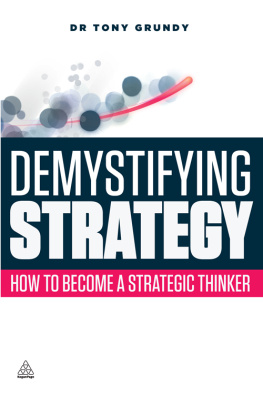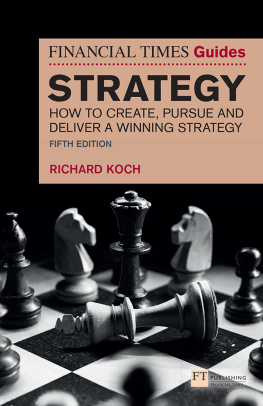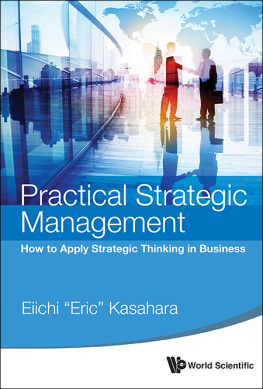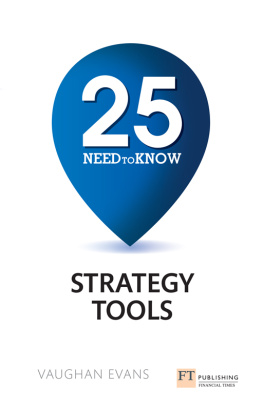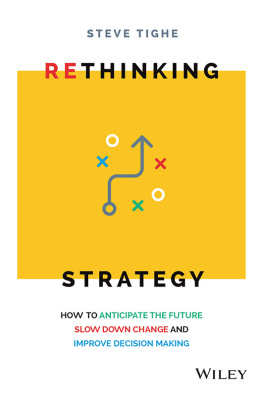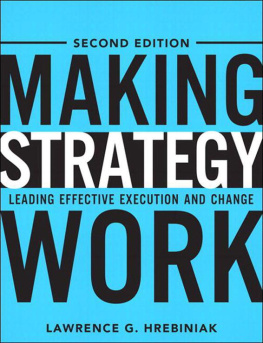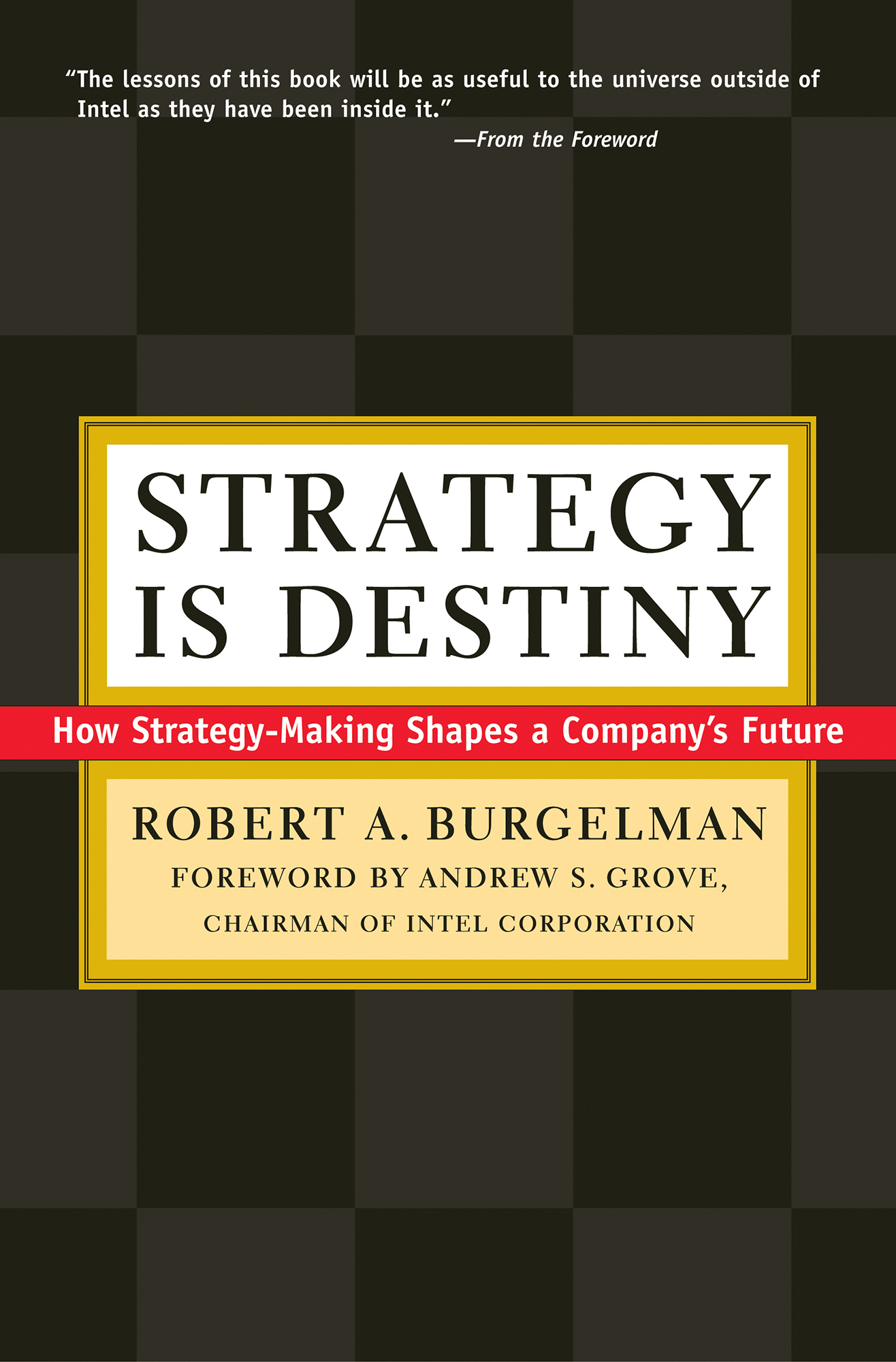Contents
Guide

THE FREE PRESSA
Division of Simon & Schuster, Inc.
1230 Avenue of the Americas
New York, NY 10020
www.SimonandSchuster.com
Copyright 2002 by Robert A. Burgelman
All rights reserved, including the right of reproduction in whole or in part in any form.
THE FREE PRESS and colophon are trademarks of Simon & Schuster, Inc.
For information regarding special discounts for bulk purchases, please contact Simon & Schuster Special Sales: 1-800-456-6798 or
Designed by Leslie Phillips
Library of Congress Cataloging-in-Publication Data
Burgelman, Robert A.
Strategy is destiny: how strategy-making shapes a companys future / Robert A. Burgelman.
p.cm.
Includes bibliographical references and index.
ISBN 0-684-85554-2 (alk. paper)
1. Intel CorporationManagement. 2. Semiconductor industryUnited StatesManagementCase studies. 3. Computer industryUnited StatesManagementCase studies. 4. Technological innovationsManagementCase studies. 5. New productsManagementCase studies. 6. Organizational changeCase studies. 7. Strategic planningCase studies. I. Title.
HD9696.S44I5622002
dc212001040825
ISBN-13: 978-0-684-85554-7
ISBN-10:0-684-85554-2
ISBN-13: 978-0-743-22603-5 (ebook)
For Stefan and Oliver, explorers of different realms
I say unto you: one must still have chaos in oneself to be able to give birth to a dancing star.
N IETZSCHE, Thus Spoke Zarathustra
ACKNOWLEDGMENTS
Professors in academic business schools sometimes face a frustrating tension. Exciting teaching requires up-to-date material about the most advanced developments in business. It requires constant tracking of business news. The search is broad and almost by necessity somewhat shallow. Exciting research, on the other hand, requires staying with the same subject for an extended period of time in order to delve into it and ask the nonobvious questions that open the door to gaining new insight that makes a clear and distinct contribution to knowledge. Research must be deep and by necessity somewhat narrow. Seldom does the opportunity arise to resolve this tension in a totally satisfying way. This book is the result of such an opportunity.
In August 1988, I had the privilege of meeting with Andy Grove, then CEO of Intel Corporation. I had twice given a seminar at Intel, but I had not met Andy Grove before. While I very much enjoyed meeting him, I did not anticipate that more than twelve years later I would be acknowledging the good fortune that resulted from his visit. Andy was kind enough to write a foreword for this book with some of his reflections on how our working relationship at the Stanford Business School evolved and how he experienced it. It is how I experienced it as well. Andy and I collaborated on writing and teaching a dozen or so research cases tracking Intels strategy-making over time. Andys teaching of these cases in our MBA elective course produced additional data about major events that had just happened or were still going on at Intel. Being allowed to use this data to write several articles for academic journals, including one co-authored with Andy, while teaching about a company that Time magazine in 1997 called the essential firm of the digital age, happily resolved the tension between research and teaching described above. I am grateful for it.
Gathering the data for the case material that serves as the basis for this book required the collaboration of Intels top management and many dozens of senior and middle managers as well. There are too many to list all of them here. Many are mentioned by name in the chapters that follow. Some former Intel executives contributed data as well. They all retained a remarkable degree of respect for the company they had left for various reasons. I thank all of them.
Gordon Moore graciously agreed to be interviewed in early 1989 and ten years later again. Gordons insightful comments and predictions in 1989 provided a background against which the actual unfolding of Intels evolution during the next ten years could be tracked. His reflections in 1999 provide a new background against which the current Epoch in Intels evolution can be tracked in the future. Special thanks is due to Dennis Carter, the architect of the Intel Inside campaign, who during 199899 co-authored a case entitled Intel Corporation: The Evolution of an Adaptive Organization. Dennis not only helped with access, he also generously contributed his own views to help interpret some of the data and served as a reality check. Special thanks is also due to Frank Gill, a former Intel executive vice president, who left the company in 1998 but was willing in early 2000 to share his views on some of the issues Intel faced during the 1990s in trying to develop new businesses. Franks candid recollections helped deepen the analysis of new business development at Intel during Andy Groves tenure as CEO. Finally, I am grateful to Craig Barrett for inviting me to teach seminars on internal corporate venturing and strategic change to Intels top 400 executives during 199798 in the Growing the Business course. Intels Business Practices Network staff was helpful in putting together this course. Carol Tisson, in particular, provided access to internal survey and interview data that helped me prepare for these classes. These classes provided an extraordinary opportunity to check the face validity of the conceptual frameworks used in this book. They generated examples, additional information and alternative views that further clarified and sometimes changed what I thought I already knew.
Gathering the data and writing the cases during the longitudinal research involved several research associates over the years. Without their help this book could not have been written. George Cogan (Stanford MBA 89), Bruce Graham (Stanford MBA 91), Dan Steere (Stanford MBA 93), Ray Bamford (Stanford MBA 96), Ken Fine (Stanford MBA 97), Osamu Suzuki (Stanford MBA 98), Chris Thomas (Stanford MBA 00), and Philip Meza (Wharton MBA 96) made important contributions to the research. Cogan and Graham, in particular, provided expertise in semiconductor technology early on in the research that helped me develop important parts of the arguments presented in chapters 2 through 5. Bamford co-authored the 1999 case with Dennis Carter and myself providing an historical overview of Intel mentioned above.
Stanford Business School has provided most of the support of the twelve-year-long research effort. The 198788 BP America Faculty Fellowship and the 199697 GSB Trust Faculty Fellowship have provided extra financial support. An international quarter supported by the school and spent as a Visiting Scholar at INSEAD in spring 1998 provided the time and space to get the writing of the book under way. The continuous availability of top quality research assistance was crucial in sustaining the longitudinal research effort. Sylvia Lorton, Diane Conlinn and Kerry Breuer provided excellent administrative support. Linda Bethel crafted most of the figures. Mary Petrusewicz edited the manuscript and provided many suggestions for improving its clarity. Thanks to former Dean Mike Spence and current Dean Bob Joss, as well as the colleagues that have served as associate dean for research and course development over the years, for the schools sustained support. Finally, thanks to the Harvard Business School for inviting me to spend academic year 199192 as a Marvin Bower Fellow. This allowed me to reflect full time on what I had learned from the field research at Intel during 198891, which helped build the foundation for the book.


